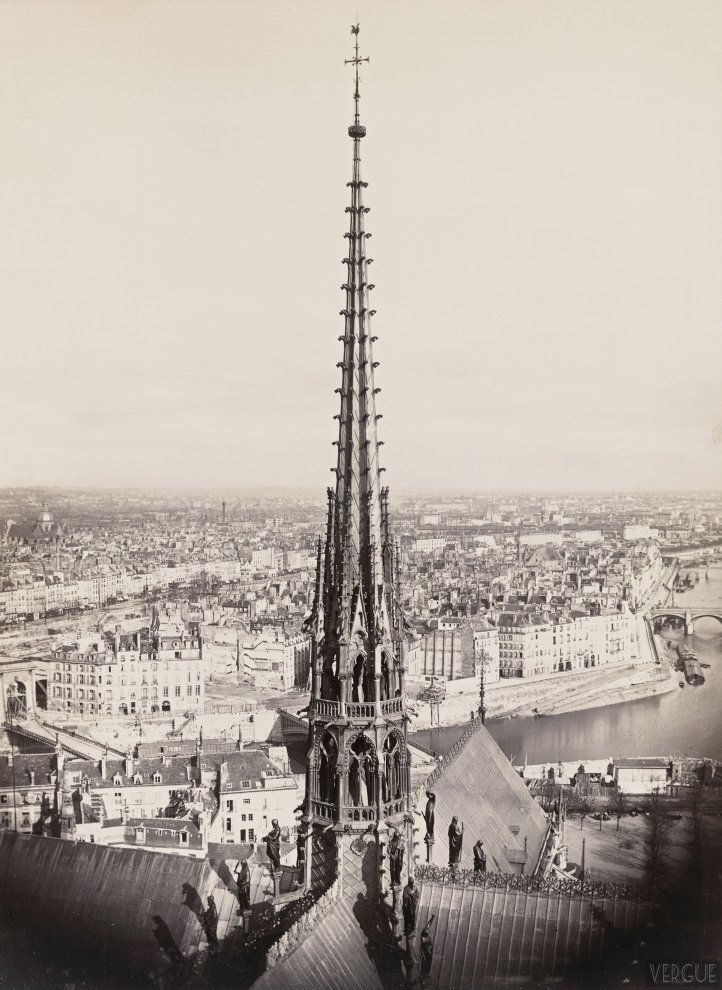Marville, The Arrow of Notre-Dame de Paris, 1862
The Oxford University Press on the Notre-Dame restoration efforts ...
Sometimes it takes a catastrophic loss for us to realize how important historic architecture and cityscapes are to our lives. For instance, repairs are still ongoing following a 2011 5.8 magnitude earthquake that caused more than $30 million dollars’ worth of damage to the National Cathedral in Washington, DC. And on 15 April 2019 a cataclysmic fire brought massive destruction to the Gothic cathedral of Notre-Dame in Paris, including the loss of its soaring spire and its centuries-old wood roof structure. There followed an international outpouring of grief for the loss of one of the icons of Western architecture. People from innumerable walks of life and countries around the world mourned the loss of a building that represented the aspirations, creativity, and sheer labor of mostly nameless artists, architects, and workers. The restoration campaign likely will take years, perhaps even a decade or more.
Around the globe, wars and natural disasters—not to mention modernization and development—threaten the built environment. Globally, more than half of the world’s population (according to the United Nations Population Division) now lives in cities, and by 2050 about 70% of the earth’s population will be urban. We can only imagine what the implications of this growth will be for historic cities and buildings and hope that heritage preservation and conservation will keep pace.
It’s not just iconic monuments and buildings by famous architects that we have to be concerned about: historic architecture and urban environments are mostly the work of unnamed (vernacular) builders and craftspeople—not professional designers. All sorts of builders and buildings will be affected in this period of urbanization and development. To become effective preservation advocates, we will all have to become knowledgeable about a wide range of buildings and environments.
Eugène-Emmanuel Viollet-le-Duc (1814-1879), the nineteenth-century restorer of the Cathedral of Notre-Dame in Paris, made the connection between modernization and preservation in his Dictionnaire raisonné de l’architecture française du XIe au XVIe siècle (Dictionary of French Architecture from the Eleventh through the Sixteenth Centuries) published beginning in 1854. The author began his entry on “Restoration” by saying “The word and the thing are modern.” This seemingly paradoxical statement contains a kernel of truth that is as apt now as it was in the mid-nineteenth century: Although preservation (or restoration, in his terms) is concerned with retaining buildings that represent the past, the very need to do so is a function of modernization.

No comments:
Post a Comment